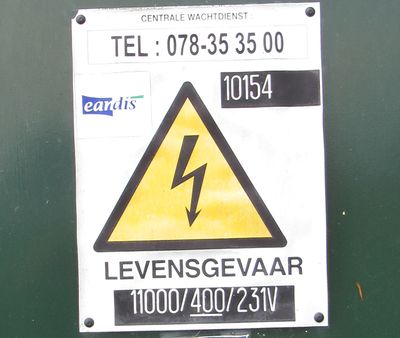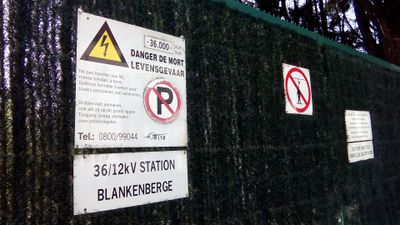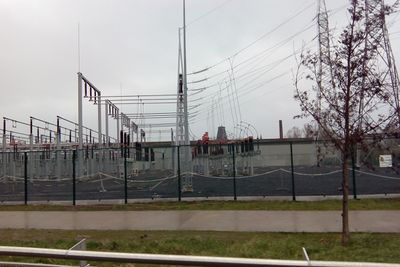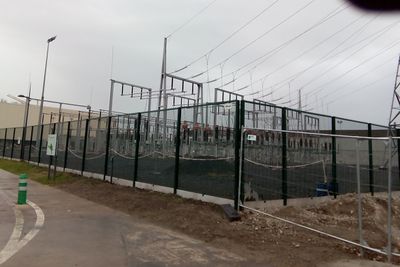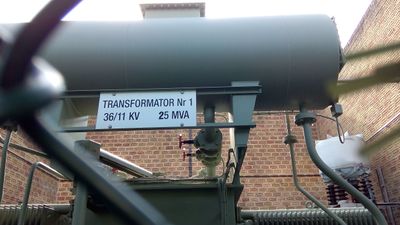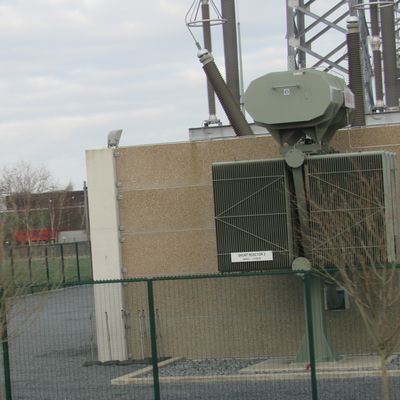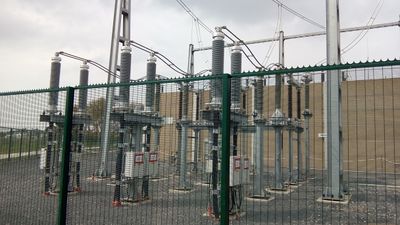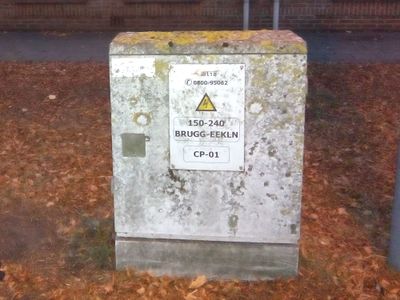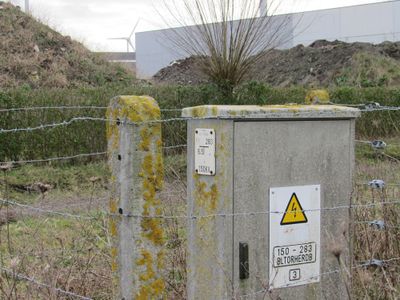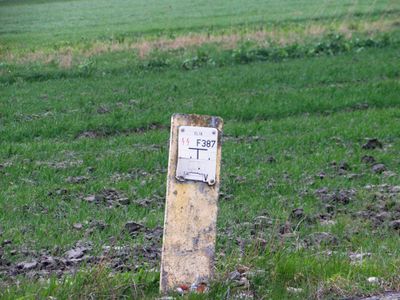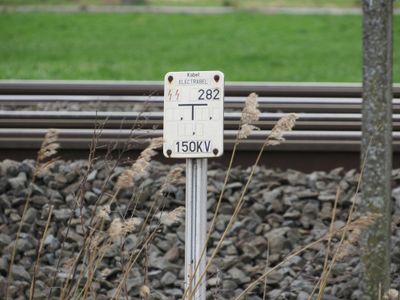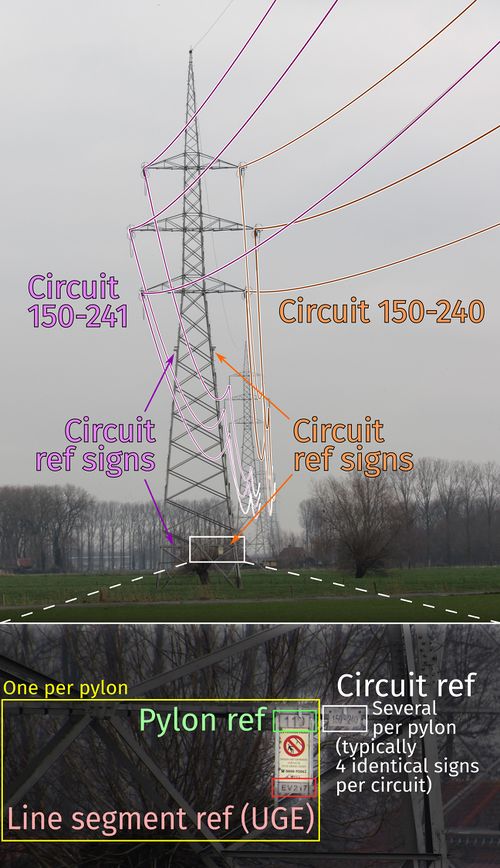User:M!dgard/Photographing electricity infrastructure in Belgium
You don't have to understand how electricity systems work to help get them mapped in OSM. Here are some tips for photographing in the most helpful way. We first give a very non-technical crash course that will help you to know what to look for.
Be advised that this is at your own risk. For example, I'm not responsible if you are stopped for suspicious behaviour.
Crash course
For mappers, the most important property to know is the voltage (Dutch: spanning, French: tension). Voltage is to electricity what pressure is to fluids and gases. You'll see voltages written with the units volt (V) or kilovolt (1 kV = 1000 V).
Higher voltages are used to transport electricity in bulk with smaller losses. In Belgium, "high voltage" (abbreviated HV) is defined as 28 kV and up. By law HV infrastructure is managed only by Elia. The lower voltages are managed by several other companies, like Fluvius (formerly Eandis).
The metal that is used to transport the electricity is called a conductor. Your plugs at home have them in pairs (live and neutral; earth wires don't count), but for HV you'll almost always see them in groups of three (all of them are "live"; lightning arrestor wires don't count). The three conductors carry electricity that runs slightly differently.[1] This helps at transporting electricity more efficiently. One group of three such conductors is a circuit.
You will likely be electrocuted if you come too close to HV conductors (<5m), even if you don't touch them. Don't enter substations.
Want learn more? If you understand Dutch, you can read hoogspanningsnet.com's stroomcursus.
Minor distribution substations
In my neighbourhood they have a sign on the door that looks like this:
A photo of the door with the sign is enough.
There are also substations that combine electricity and gas. Might as well photograph the gas part too. :) ![]() To do: Add photo
To do: Add photo
How to map
- power=substation
- substation=minor_distribution
- voltage=* in volts (e.g. 11000 if the sign says "11kV", 11000;400;231 if the sign says "11000|400|231V")
- ref=*
- name=* or noname=yes
If there's a sticker of an operator:
- operator=* e.g. Fluvius
- operator:wikidata=* e.g. Q58864503 for Fluvius
If inside another building, you can use a ![]() node and add location=indoor. Example: 7775302059
node and add location=indoor. Example: 7775302059![]() 7775302059
7775302059
If in a dedicated building, you can use a ![]() way and add building=service. Example: 810204432
way and add building=service. Example: 810204432![]() 810204432
810204432
HV substations
Substations should display their name and either the highest voltage that's present or all voltages that are. Sometimes there's a reference code too (not always present at each entrance. E.g. "BLANK" for Blankenberge's 36 kV station, but not at the gate pictured here).
Take as many pictures from as many angles as you can, this helps to see where the conductors lead to. You can touch the fence and hold your camera against it, it's not energized. Look at aerial imagery in advance to see where you can go: you might be able to see the other end of the station from another street.
Transformers and other devices
Dutch: transformator. French: transformateur. Abbreviation in both languages: transfo.
Transformers come in all sizes. They transform power from one voltage to another.
Elia gives transformers in HV substations a sign with a reference number ("transformer nr. 1"), the rating (how much power they can deal with, e.g. 250 MVA) and the voltages. Photograph or take note of this information if you can see it. If you see other plates with detailed technical specs, you can photograph them too.
You can also find other devices, like shunt reactors. In the picture below, the shunt reactor is behind the wall and the sign is attached to the cooling element.
Underground cables
Information about cables is very highly valued, as this is mostly impossible to see on aerial imagery.
Transitions between overground and underground lines can happen in a normal substation or in a dedicated transition substation. In both cases, there's normally a sign where conductors disappear underground that shows the ref of the circuit and of the substation(s) it leads to.
At some points along the trajectory of high-voltage cables you can find above-ground cabinets (to connect different segments of the cable together) and markers.
Pylons
Pylons bear signs with mappable reference codes:
- The ref of each circuit
- The ref of the pylon
- The ref of the line segment (UGE, unité géographique)
Make sure to note the direction in which you photograph the circuit ref signs, so it's possible to see which circuit is on which side.
Footnotes
- ↑ Slightly more detailed explanation: most of the power grid uses alternating current (AC). In AC the voltage is not constant: if you have 36 kV AC, it changes from 36 kV to -36 kV, 50 times per second. Three different phases mean that the peaks occur at three different times, instead of at the same time. See other sources for more detailed explanations.
